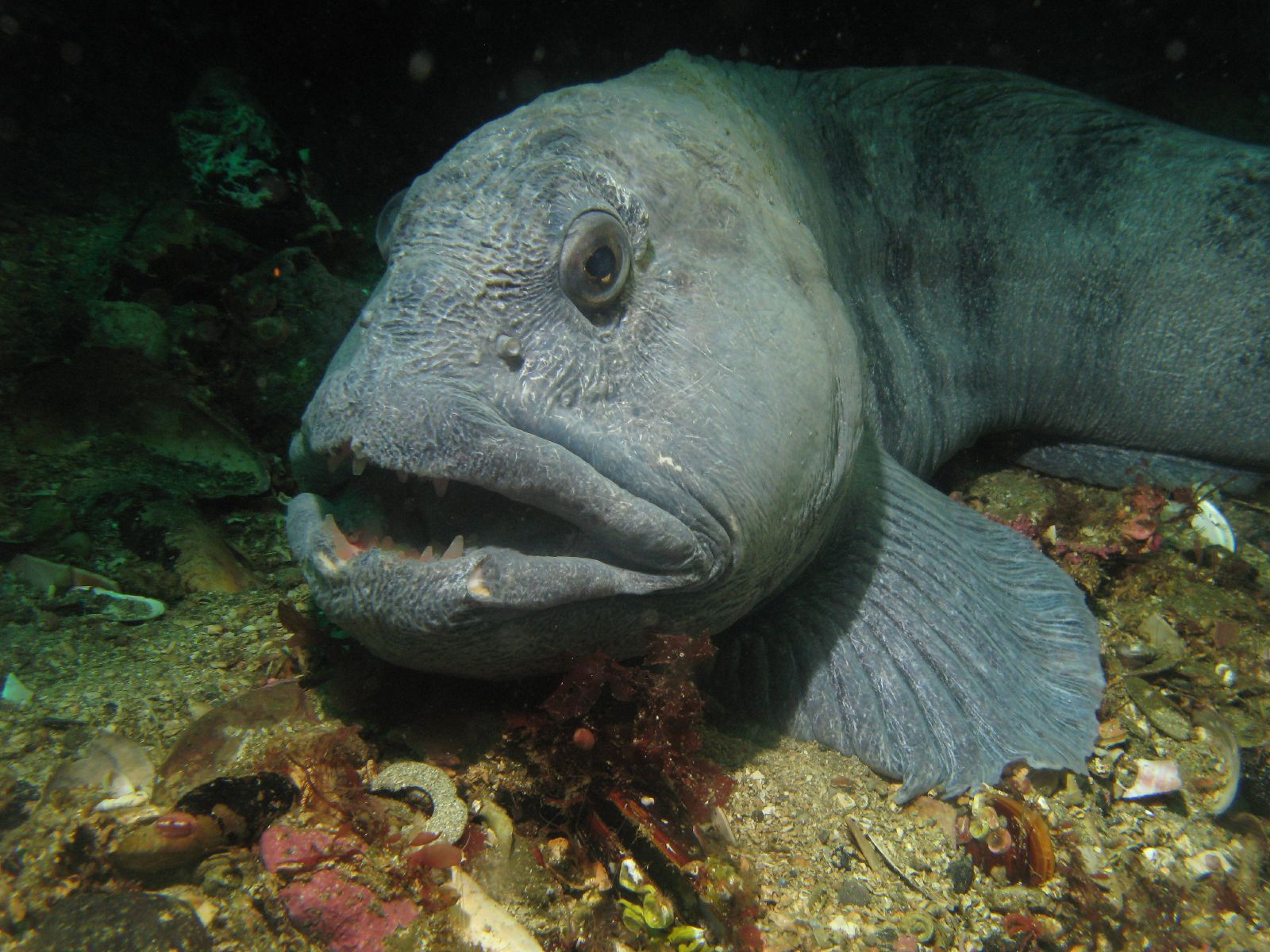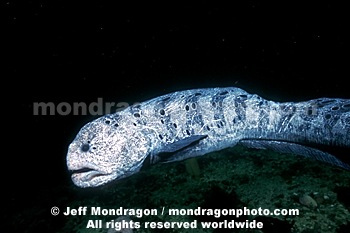
As long as divers remain calm and respectful around wolf eels, there is no reason to fear them as they will generally not become aggressive.

This behavior has been observed in different parts of the world, including the waters of the Bahamas and California. They often approach divers and seem more interested in playing than anything else. In addition to forming these strong relationships, they have been known to interact with divers in an inquisitive manner. Unlike other species of fish, wolf eels form monogamous relationships with their partners, often lasting for life. Wolf eels are actually quite friendly creatures that are surprisingly curious around divers. Though it may appear intimidating at first glance, the Wolf Eel is actually quite peaceful and can make for an interesting encounter when diving or fishing in its natural habitat. They will usually bite at almost any type of bait, but have been known to be particularly attracted to shrimp, small crabs, mussels, abalone or anchovy. Mysterious and unique, wolf eels are fascinating creatures illustrating there is more than meets the eye when it comes to understanding our oceans amazing animals.Wolf Eels are mostly caught by anglers fishing in rocky areas along the shoreline in central and northern California. For wolf eels, it is important to maintain their habitat, which means keeping our oceans clean of pollution, debris, and chemical or sewage runoff which can damage the kelp forest environment, threatening their food supply and habitat. Many marine species are threatened from being accidentally caught in fisherman gear. While fisherman do not generally target wolf eels, they are frequently caught in crab and fish traps. They have a row of 4-6 fang-like teeth in the front for piercing, and back rows of strong molars meant for crushing and grinding prey.Ĭurrently, the population of wolf eels appears to be stable. Most striking are the jaws of wolf eels, which are specially adapted to crunch through the hard outer layers of tasty animals such as sea urchins and other hard-shelled animals including mussels, clams, snails, and even fish.

They possess a thick coating of slime, which serves as protection like an immune system, and have small and imbedded scales giving them a leathery appearance. The males are gray in coloration while the females are brown, but both have a unique pattern of spots differentiated by their gender. Reaching lengths of up to eight feet and weighing up to 50 pounds, these animals can be massive. Once settled, these animals are territorial and males will fight one another for space, or sometimes females. Wolf eels are known to be highly attentive parents, with both parents invested in nurturing and caring for their eggs. It is here they act like old romantics, wooing their partners and settling down in a rocky lair to live out their days.
Pictures of a wolf eel skin#
As they age, their skin darkens and they begin looking for a place to settle on the seafloor. With their bright orange skin and slender head and body, they most closely resemble eels at this stage of their life. One juvenile was even documented traveling 1,000 km from British Columbia to Washington over two years. As juveniles, wolf eels are like lone wolves drifting with the ocean currents and hanging out near the top of the water column. Wolf eels are one of the rare creatures on Earth that finds a partner and mates for life, in most cases.

© Carrie Vonderhaar, Ocean Futures Society Some say they have a face “only a mother could love,” and while they may startle us with their bulbous fleshy heads and massive daunting jaws, wolf eels are known to be curious and even friendly to divers. Instead, they are part of the Anarhichadidae family, which is a group known as the “wolf fishes.” These animals inhabit the cool waters of the northern Pacific, ranging from the Sea of Japan and Aleutian islands to Southern California, making a home in rocky reefs and stony bottoms. However, they are neither wolf nor true eel. With elongated slender bodies, large heads and intimidating jaws, wolf eels were named for their superficial resemblance to eels and wolves. Snuggled within the cracks and crevices of the Pacific coasts rocky reefs lies two lovers in hiding.


 0 kommentar(er)
0 kommentar(er)
